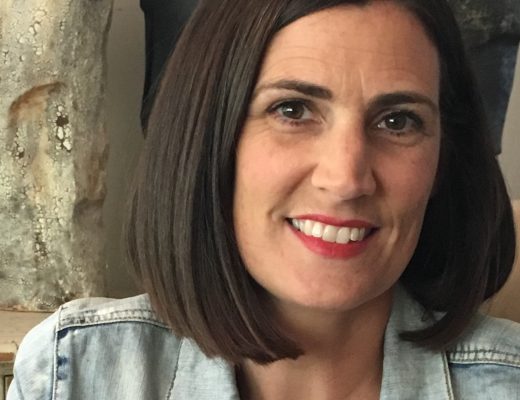The Collected Schizophrenias
Esmé Weijun Wang
224 pages
Graywolf Press, $16.00
 Poet and mental health advocate Kelsey Hoff dives into the nonfiction genre through her review of Esmé Weijun Wang’s The Collected Schizophrenias.
Poet and mental health advocate Kelsey Hoff dives into the nonfiction genre through her review of Esmé Weijun Wang’s The Collected Schizophrenias.
The Collected Schizophrenias, a series of distinct essays by Esmé Weijun Wang, traces her experience with a rare condition beginning right before starting college at Yale and moves throughout her adulthood as she tries to find the language to articulate her subjective experience with illness. For instance, “Diagnosis” and “Toward a Pathology of the Possessed” illuminate clinical frameworks for understanding schizophrenia and its variations within the systems of medical research and practice in the United States, whereas other essays such as “High Functioning” and “Perdition Days” sketch out her specific symptoms alongside their various medical explanations and treatments.
Wang’s research crosses all kinds of boundaries, as mental illness does—an individual shard of reality piercing through all kinds of media and documentation—to take into account the sum and the parts of her own mental health while also accounting for other diagnoses of schizophrenia. Specifically, Wang’s primary diagnosis is schizoaffective disorder, bipolar type, which is just one of the many variations of schizophrenia alluded to by the title. As she explains, “the schizophrenias encompass a range of psychotic disorders, and it is a genus that I choose to identify with as a woman whose diagnosis is unfamiliar to most—the shaggy, sharp-toothed thing, and not the wolf” (12). Wang’s creative skill shines through in passages like this one to bridge gaps in understanding and bring untidy concepts to life while expressing the emotional pain of living with these cognitive dissonances. In one deft metaphor, she expresses the loneliness of being so misunderstood as an individual while reaching out to embrace others who have experienced this kind of misidentification.Due to this misidentification, there is no perfect understanding for someone with this diagnosis; but rather, it seems that something is always diminished in the return. Wang writes, “humans might all be ciphers to one another, but people with mental illness are particularly opaque because of their broken brains. We cannot be trusted about anything, including our own experiences” (39). Again, the alienation of misunderstanding is compounded with an emotional component: an insidious underlying blame that isn’t usually attached to most physical, visible diseases. It’s no wonder that people with mental illness are sometimes so resistant to treatment when their symptoms are all met with scrutinizing doubt.
Much like the trial-and-error process of finding medication that alleviates symptoms without unbearable side effects, Wang tests the efficiency of codes and systems against her life and the stories of others with schizophrenia, asking how those systems could be tweaked to allow for increased freedoms. For example, psychologists incongruously measure patient functionality in the outside world by determining the patient’s ability to hold down a job, and Wang conveys her own personal experience to meet this benchmark. She writes, “While fighting with my insurance company over disability benefits, I tried to explain that I can’t work at McDonald’s, but I can run a business based on freelance work” (50). As a result, Wang takes a deep look at the narratives that drive people to support different approaches to evaluating and treating mental illness.
However, Wang’s analysis doesn’t stop there, and she also juxtaposes and connects additional experiences among the other participants entrenched in these systems. More specifically, Wang evaluates a law that determines what freedoms a person deemed “functional” is entitled to: Bill AB 1421 was created in the state of California in 2002 on the assumption that “people who display a certain level of mental disorder are no longer capable of choosing their own treatment, including medication, and therefore must be forced into doing so” (31). This bill would essentially legalize “involuntary hospitalization,” which would allegedly provide a solution for the families of mental patients who otherwise aren’t involved with the treatment process but remain responsible for sporadic and expensive medical bills. Supported by the National Alliance on Mental Illness (NAMI), largely made up of families of mental patients and not the patients themselves, AB 1421 circumvents the patient’s will entirely.
As someone who was involuntarily hospitalized on three different occasions, Wang states, “it is hard to convey the horror of being involuntarily committed. First, there’s the terrifying experience of forcibly being put in a small place from which you’re not allowed to leave. You’re also not allowed to know how long you’ll be there, because no one knows how long you’ll be there” (39). Consequently, Wang asserts that this bill opens the door for traumas that could be avoided by a patient-focused approach with a goal of autonomy rather than control. Whereas control of a patient’s behavior prioritizes the comfort of those around them and enforces conformity for conformity’s sake, framing treatment with the goal of autonomy recontextualizes the patient’s symptoms as their own problems to work on, empowering them to take an active role in their own recovery and work with their doctor to find solutions they can agree on. Allowing patients to recover on their own terms rather than those thrust upon them makes for long-lasting recovery, dignity, and purposeful living; forced treatment often equates to punishment. In other words, while some may glaze over this trauma as a non-issue in the debate over AB 1421, Wang brings it front and center in the space where judge, jury, and family members never step foot: where the actual treatment in question takes place.
For all the synthesis and reasoning Wang puts into place, there are still a significant number of blanks drawn where there simply isn’t enough data to come to a conclusion. The final few essays in the collection veer away from the topic of schizophrenia to touch on similarly misunderstood and difficult-to-treat illnesses that the author has been diagnosed with and the alternative spiritual and mystical methods she’s tried to make sense of those scientific gaps.
Among these is Lyme disease, a condition so obscure an entire community of Lyme-literate medical doctors (LLMDs) had to organize itself; “Because the CDC does not officially support a chronic Lyme diagnosis, the world of those who diagnose and treat chronic Lyme and those who are affected by the disease exists outside the parameters of conventional medicine” (174). The confusion around Lyme disease stems from a flawed classification system, as with schizophrenia. Wang muses, “Perhaps I don’t have chronic Lyme disease at all, but something else that may or may not be recognized by the CDC” (181). “These days,” she says, “I tell people I have both chronic Lyme and schizoaffective disorder, and as far as I know, they believe me” (181). It’s interesting to note the difference between the tidy explanations Wang offers others and her vague personal convictions, which often can’t be so conclusive since she is currently in her thirties and much waits to be seen. Managing the pain and stress of living without answers on top of her other mental and physical symptoms understandably leads Wang to unorthodox places in search of relief.
Wang makes a trip to the Catholic pilgrimage site of Chimayó to visit a pit of holy dirt said to have curative powers. Though the dirt cure didn’t work, Wang gained a deeper understanding of her relationship to pain from studying Catholicism (183) and some insights about how her different symptoms might be linked by studying the theory of liminality (197-198). Talismanic cords help her feel bound to reality when she starts feeling the onset of psychosis (198-199). Wang explains, “the sacred arts have given me some solace not so much through the beliefs they provide as through the actions they recommend. To say this prayer—burn this candle—perform this ritual—create this salt or honey jar—is to have something to do when it seems that nothing can be done” (201). As much as this book is a wake-up call outlining places where existing data and common sense can be used to make practical changes, it also takes into account how long it would take if the appropriate decision makers were inclined to take action and what critical pieces are still missing. The real empowering work of these essays takes place for the individual: Wang makes a great argument for the destigmatization of occult practices and normalization of alternative medicine. When every system of logic fails an individual, the scientific measurability and social repute of their methods gives way to their ultimate survival and well-being.
Overall, Wang’s essays comprise an oral history of one woman’s cohesive, continuous effort towards understanding and living with her mental illness, which defies explanation and categorization. She grapples with the systems imposed on her for coding and understanding schizophrenia, decision-making and responsibility, treatment and control, and through these essays has assembled a functional picture of her schizophrenic experience as a whole, gifted and unique person with a family, a career, goals, and desires.
It must be noted, however, that by writing this book, she has also sacrificed her own privacy for the sake of the millions of other Americans suffering from the schizophrenias. Regardless of the social or institutional situation, The Collected Schizophrenias never loses sight of the schizophrenic patient as a whole person suffering from a disease, and the roles of other individuals who are no better or worse than them but nonetheless responsible for making decisions that will change the quality of their life. Between the lines, Wang is asking: What kinds of communication get attention for different kinds of people with schizophrenia? What kinds of testimony get brushed off as invalid because of who is speaking them? In pursuit of understanding, the reader is reminded to rely less on what they think they know and more on observation. Readers are reminded to re-assess their expectations and ask where they’re coming from, relax boundaries, be less dependent on categories, and more open to alternative solutions.
Bio: Kelsey Hoff is a poet and writer living in Chicago, where she earned her MFA from Columbia College. Her poems have been published in Redheaded Stepchild, Hobo Camp Review, Columbia Poetry Review, Literature Emitting Diodes, A Farther Room, and on poets.org. Follow her on Twitter at @MidwestMadGirl.


